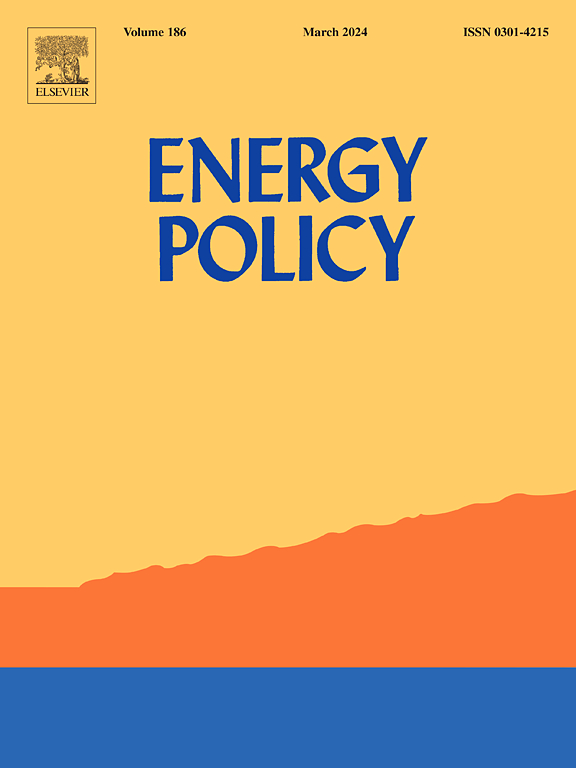Carbon emissions from electricity consumption in interprovincial grids of China: An electricity-extended input-output analysis
IF 9.2
2区 经济学
Q1 ECONOMICS
引用次数: 0
Abstract
Life cycle carbon emissions mitigation from electricity consumption is crucial for China's decarbonization. With the expansion of interprovincial electricity trade, carbon emissions from electricity consumption become increasingly diverse in both sources and determinants. Tracking the carbon emissions and determinants is thus fundamental to formulating targeted mitigation measures. To this end, we develop an electricity-extended input-output model that incorporates interconnected grids into the macroeconomic input-output framework. The proposed method holistically accounts for electricity generation, transmission, distribution and higher upstream production across the life cycle of electricity consumption. Applying this method to examine the carbon footprints of electricity consumption across 30 provinces during 2018–2022 shows that North, East and Central grids exhibited higher carbon footprints, and carbon footprint factors varied significantly across provinces. Beijing, Hebei, Shandong, Liaoning and Zhejiang witnessed great electricity and carbon inflows and registered indirect interprovincial trading paths. Revealing the determinants shows that improvements in electricity structure, transmission and distribution efficiency, fuel mix and in-plant electricity use efficiency contributed to carbon reduction, while the regional structure of electricity supply became carbon-intensive, particularly in Guangdong, East grid and Shandong. Policy implications regarding carbon footprint reduction from the interprovincial electricity trade perspective are discussed.
中国省际电网用电碳排放:电力延伸投入产出分析
减少电力消费的生命周期碳排放对中国的脱碳至关重要。随着省际电力贸易的扩大,电力消费碳排放的来源和决定因素日益多样化。因此,跟踪碳排放和决定因素对于制定有针对性的缓解措施至关重要。为此,我们开发了一个电力扩展投入产出模型,将互联电网纳入宏观经济投入产出框架。所提出的方法全面考虑了电力消费整个生命周期的发电、输电、配电和更高的上游生产。将该方法应用于2018-2022年30个省份的电力消费碳足迹研究表明,北部、东部和中部电网的碳足迹更高,且碳足迹因素在各省之间存在显著差异。北京、河北、山东、辽宁和浙江的电力和碳流入较大,并存在间接的省际交易路径。对决定因素的揭示表明,电力结构、输配效率、燃料结构和厂内用电效率的改善有助于碳减排,而电力供应的区域结构变得碳密集型,特别是在广东、东部电网和山东。从省际电力交易的角度讨论了碳足迹减少的政策含义。
本文章由计算机程序翻译,如有差异,请以英文原文为准。
求助全文
约1分钟内获得全文
求助全文
来源期刊

Energy Policy
管理科学-环境科学
CiteScore
17.30
自引率
5.60%
发文量
540
审稿时长
7.9 months
期刊介绍:
Energy policy is the manner in which a given entity (often governmental) has decided to address issues of energy development including energy conversion, distribution and use as well as reduction of greenhouse gas emissions in order to contribute to climate change mitigation. The attributes of energy policy may include legislation, international treaties, incentives to investment, guidelines for energy conservation, taxation and other public policy techniques.
Energy policy is closely related to climate change policy because totalled worldwide the energy sector emits more greenhouse gas than other sectors.
 求助内容:
求助内容: 应助结果提醒方式:
应助结果提醒方式:


